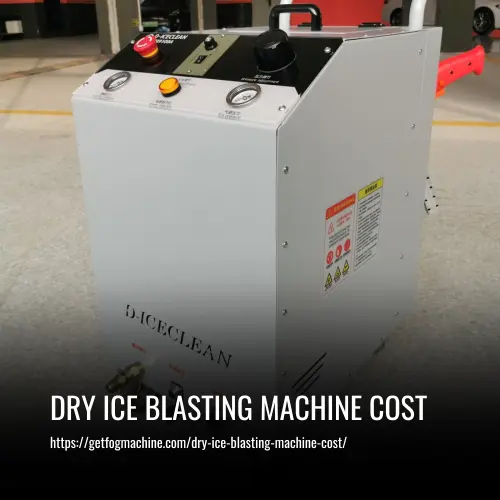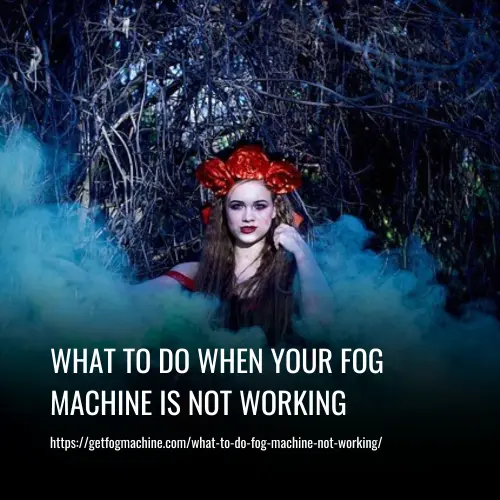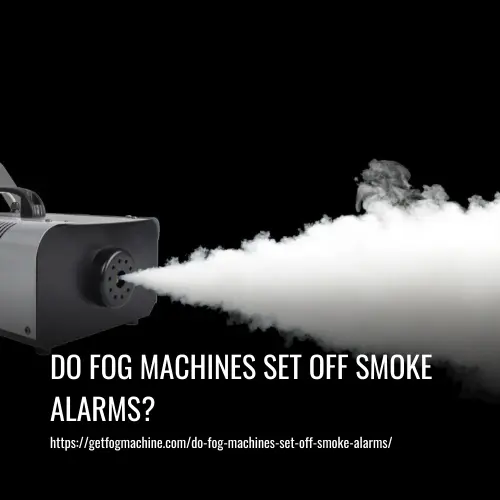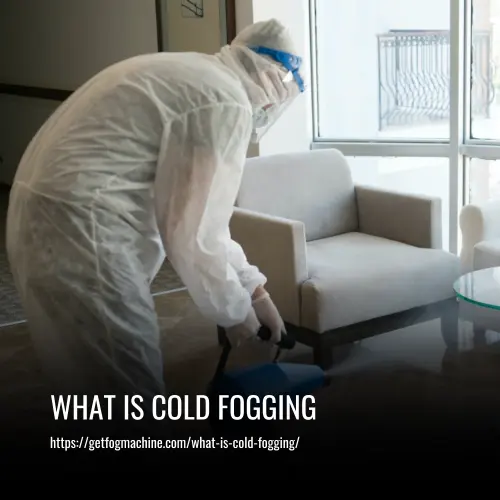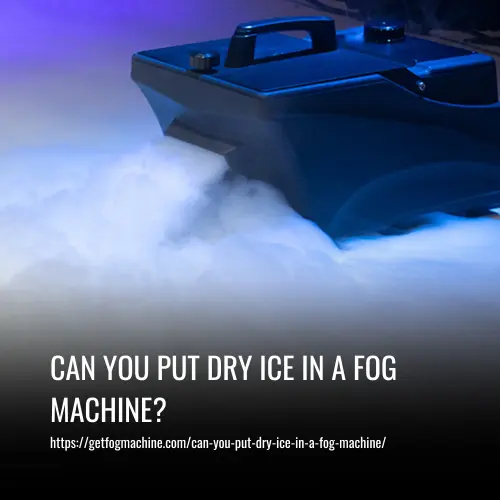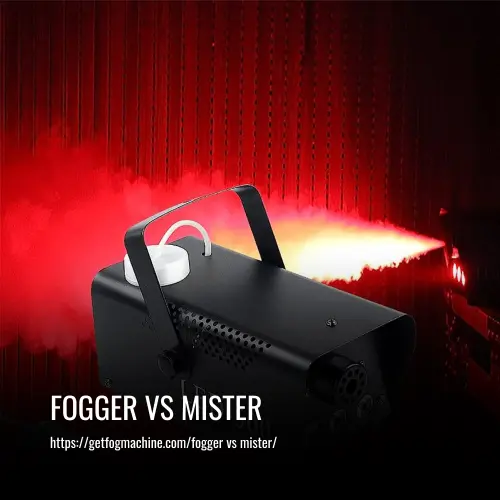How Do Fog Machines Work: A Complete Guide
This post contains affiliate links. As an Amazon Associate, we earn from qualifying purchases.
A fog machine creates fog by heating a mixture of water and glycerin to the necessary temperature. The heated liquid vaporizes and escapes through a nozzle, where it mixes with cooler air. As the hot vapor interacts with the cooler air, it condenses and transforms into fog.
This process allows the fog machine to generate dense vapor, creating atmospheric and visual effects for various applications such as special effects in film and theater, creating a spooky atmosphere for Halloween events, or enhancing the ambiance of dance clubs and other entertainment venues.
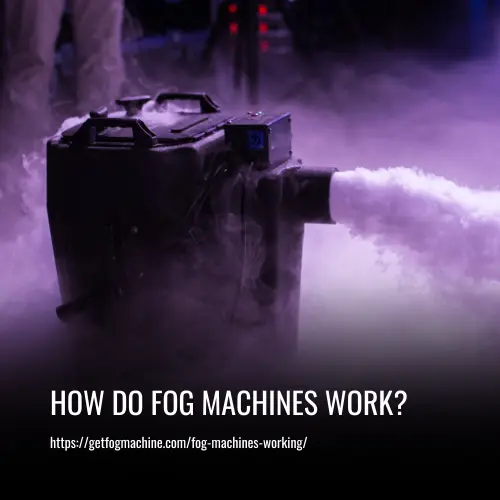
Understanding How Fog Machines Work
Fog machines are commonly used to create special effects and enhance the atmosphere in various settings such as dance clubs, outdoor events, and theme parks. Here we will explore how fog machines work and the essential elements that make them function.
1. Heat Exchanger
The heat exchanger is the key element in a fog machine. It consists of a block of metal with a heating element inside. The temperature of the heating element is controlled by a thermostat, which heats the entire block to a specific temperature. When the fog fluid comes into contact with the heat exchanger, it immediately vaporizes. Aluminum is the most commonly used metal for heat exchangers due to its quick heating and heat dissipation properties.
2. Controls
Once the heat exchanger reaches its operating temperature, the pump needs to be switched on. Most fog machines come with a remote control that includes features like an on/off switch, volume control, and timers. Professional fog machines can also be controlled via DMX capabilities or integrated with 0-10V closed-contact control systems.
3. Pump
The fog machine pump is responsible for moving the fog fluid from its reservoir to the heat exchanger. The pump selected must match the characteristics of the heat exchanger to ensure proper performance. A piston pump is commonly used in professional fog machines for its efficiency, long life, and high-volume fog output.
4. Fog Fluid
Professional fog fluids are water-based and contain a small amount of glycol or glycerin. When the fluid hits the heat exchanger, it undergoes a process called flashing, where it is vaporized to create cool steam. The vaporized fog fluid mixes with the outside air and instantly forms an opaque aerosol, creating the fog effect. The amount of glycol or glycerin used determines the opacity of the fog effect.
Fog machines rely on the combination of a heat exchanger, pump, controls, and fog fluid to produce the desired fog effect. By understanding how these elements work together, one can create captivating atmospheres and special effects for various applications.
How Does A Low-lying Fog Machine Work
Low-lying fog machines are designed to produce dense fog that floats close to the ground, creating the effect of walking on clouds. These machines use various methods to achieve this unique fog effect. One classic approach involves using carbon dioxide (dry ice) to produce fog. The machine has a dry ice basket placed above a hot water reservoir. As the hot water vaporizes, it mixes with the carbon dioxide, causing condensation and forming a dense and heavy white fog.
Another method involves high-frequency waves atomizing water, creating tiny droplets that form fog without the need for ice or carbon dioxide. These ultrasonic atomization machines are more convenient but come with a higher price tag. Both approaches allow for the creation of low-lying, dense fog that enhances visual and atmospheric effects.
How Does Fluid-Based Fog Machines Work
A fluid-based fog machine operates by using a liquid, such as liquid nitrogen or glycol, which is heated to create vapor. The vapor is then released through a nozzle and mixes with cool air to form a dense fog. Unlike dry ice fog, fluid-based fog lingers longer and appears thicker. It rises slowly due to convection currents, but it does not stick to surfaces.
To enhance the density of the fog, dry ice pellets can be added. This type of fog machine is commonly used in various settings, including dance clubs, outdoor events, and for special effects in the entertainment industry.
Where Does The Smoke Come From
There are two basic methods through which the machines produce fog. The first is through turning water and glycol or glycerin-based fluids into vapor. The second is through the atomization of mineral oils.
These processes take place inside the fog machine, after which the vaporized or atomized fluid is released. Upon contact with the cooler outside air, the fluid condenses, resulting in that thick fog we see.
Different fog machines use different approaches to achieve this desired end result. They will be our main area of coverage throughout this article. It is meant to help you understand the rationale behind different fog machines and why anyone would like to have them.
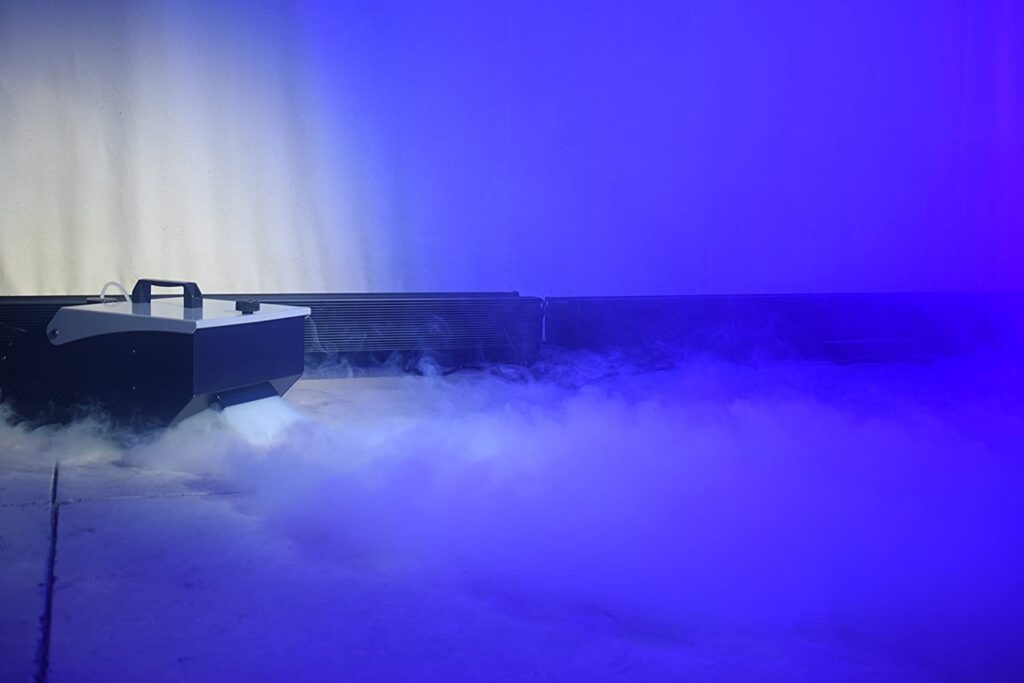
Where to Use Fog Machines
Fog machines are incredibly versatile devices that can transform any setting into a mesmerizing atmosphere. Whether it’s a live performance, film production, or even a Halloween event, fog machines can create stunning visual effects and enhance the overall experience. Here are some popular scenarios where fog machines can be a game-changer:
1. Live Performances: In theaters and live music venues, fog machines can create an eerie or mystical ambiance, adding depth and intrigue to the performance.
2. Film and Television Production: Fog machines are commonly used on film and TV sets to achieve desired visual effects or moods, making scenes more dramatic or realistic.
3. Haunted Houses and Halloween Events: To enhance the spooky experience, fog machines can generate a dense fog effect, creating an immersive and chilling atmosphere.
4. Nightclubs and Parties: Fog machines can amplify the lighting effects and overall vibe in nightclubs and parties, providing a sensational and energetic atmosphere.
5. Photography: Photographers can utilize fog machines to create unique and dramatic effects in both indoor and outdoor photography sessions, adding depth and mystique to their work.
6. Theme Parks: Fog machines are often employed in theme parks to add a layer of mystique to rides and attractions, heightening the thrill and excitement for visitors.
7. Training Simulations: Fog machines can be used to simulate real-world conditions, such as smoke-filled environments, for training exercises, particularly for emergency response teams.
8. Outdoor Events: From weddings to concerts, fog machines can create special effects or set a mood during evening events, adding an enchanting and memorable touch.
Considering the versatility of fog machines, incorporating one into your next event or project can significantly enhance the experience for your audience.

FAQs
Dry ice fog machines use frozen carbon dioxide to create fog. The dry ice is placed into a container, and when it is heated, it undergoes sublimation, transitioning directly from a solid to a gas. The gas mixes with the surrounding air, creating a dense fog effect.
A regular fog machine works by heating a mixture of water and fog machine fluid. The fluid is stored in a reservoir and is pumped into a heating element. The heat vaporizes the fluid, transforming it into a visible fog. The fog is emitted through a nozzle or vent, creating the desired effect.
The fog in a fog machine is created by heating a special fog machine fluid. This fluid is composed of a mixture of water and a glycol-based solution. When heated, the fluid vaporizes, forming tiny water droplets that are suspended in the air, creating the fog effect.
The main difference between a fog machine and a haze machine is the density of the vapor they produce. Fog machines create a thick and dense vapor, perfect for creating intense and dramatic effects. Haze machines, on the other hand, produce a finer and lighter vapor, which hangs in the air much longer, creating a subtle and hazy atmosphere.
The difference between a fog machine and a smoke machine lies in the type of vapor they produce. Fog machines create a foggy vapor using water and fog machine fluid. Smoke machines, on the other hand, produce a denser and more opaque smoke by burning a special type of fluid called smoke fluid. The choice between the two depends on the desired effect and atmosphere.
Yes, there are different types of fog machines available. The most common types include fluid-based fog machines and dry ice fog machines. Fluid-based fog machines are more versatile and can produce fog continuously for longer periods of time. Dry ice fog machines are ideal for achieving a low-lying fog effect and are commonly used in outdoor events.
Fog machines use a special fog fluid that is a mixture of water and a glycol-based solution. This combination creates the perfect consistency for producing dense and long-lasting fog. It is important to use the recommended fog fluid for your specific fog machine to ensure optimal performance.
When used properly and in well-ventilated areas, fog machines are generally safe to use. However, it is important to read and follow the manufacturer’s instructions to avoid any potential health risks. It is also recommended to use the appropriate fog machine fluid and avoid prolonged exposure to the fog.
There can be several reasons why a fog machine may not work. This can include a clogged nozzle, an empty fluid reservoir, a faulty heating element, or a depleted power source. It is recommended to troubleshoot and check these components to identify and resolve any issues.
Yes, you can use a fog machine in the house, but it is important to consider the size of the space, ventilation, and the sensitivity of individuals to fog effects. It is also crucial to follow safety precautions, such as avoiding direct contact with the fog, using the appropriate fog machine fluid, and ensuring proper ventilation.
Yes, fog machines can work outdoors, but it is important to choose a fog machine specifically designed for outdoor use. These machines are typically more powerful and can produce larger quantities of fog to fill open spaces effectively. Additionally, consider wind conditions and ensure proper ventilation in outdoor settings.
To make your fog machine work better, ensure that you are using the recommended fog machine fluid and that the reservoir is filled to the appropriate level. Cleaning and maintaining the machine regularly, including cleaning the nozzle and heating element, can also improve performance. Proper placement of the machine and considering the size of the space are also important factors to optimize fog distribution.
While fog machines are generally easy to use, it is recommended to familiarize yourself with the manufacturer’s instructions and safety guidelines.
When used as directed, fog machines are generally safe. However, it is important to follow safety precautions, such as using the appropriate fog machine fluid, ensuring proper ventilation, and avoiding prolonged exposure to the fog.
Conclusion
In conclusion, fog machines are versatile tools that create atmospheric and visual effects by producing a dense vapor. Regular fog machines work by heating a mixture of water and fog machine fluid, while dry ice fog machines use frozen carbon dioxide. Both types produce fog through a process of vaporization, where the fluid or dry ice transitions into a gas, creating tiny water droplets that hang in the air.
Fog machines can be used indoors and outdoors, adding a touch of drama to events, performances, and parties. It is important to follow safety guidelines and use the recommended fog machine fluid to ensure optimal performance and minimize health risks.
By understanding how fog machines work and implementing proper maintenance and usage, you can enhance your special effects and create a captivating atmosphere.

